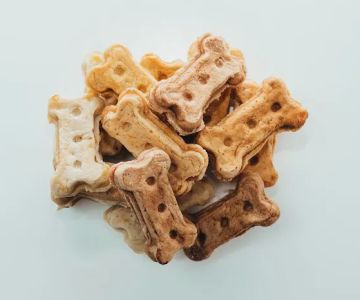- Why Choose the Best Dog Treats for Training
- What Makes a Dog Treat Ideal for Training
- Types of Dog Treats for Training
- Real-Life Success Stories with Training Treats
- How to Select the Right Training Treats for Your Dog
- Where to Find the Best Dog Training Treats
1. Why Choose the Best Dog Treats for Training
Training a dog is both an art and a science, where motivation plays a key role. The best dog treats for training act as powerful motivators that encourage your dog to learn commands, develop good behaviors, and build a stronger bond with you. Unlike regular treats, these training-specific rewards are designed to be highly appealing, small enough to offer frequently, and nutritious to support your dog's health.
Choosing the right treats is essential because overfeeding or using unhealthy snacks can lead to weight gain or nutritional imbalances. Moreover, a treat that your dog truly loves will speed up training sessions and make the process more enjoyable for both you and your furry friend. At Hidden Brook Veterinary, we understand the importance of these factors and offer tailored advice and products that fit your dog’s unique needs.
2. What Makes a Dog Treat Ideal for Training
2.1 Size and Portability
Effective dog training treats are typically small, bite-sized pieces. This allows you to give multiple rewards in one training session without overfeeding. The treats should be easy to carry and dispense quickly, ensuring your dog stays focused on the commands rather than the snack itself.
2.2 High Palatability
A treat must be highly palatable to keep your dog motivated. Many dogs prefer treats rich in protein or with strong savory flavors. Some owners report their dogs responding best to treats made with real meat, while others find soft, chewy textures more effective.
2.3 Nutritional Value
Choosing healthy dog treats is crucial for long-term wellness. Look for treats made with natural ingredients, free from artificial additives or excessive fillers. Treats with added vitamins or joint-supporting supplements can provide extra benefits, especially for active or aging dogs.
2.4 Easy to Digest
Since training often involves frequent treat-giving, the snacks should be easy on your dog’s digestive system to avoid stomach upset. This is especially important for sensitive dogs or puppies who are still developing their digestive tolerance.
3. Types of Dog Treats for Training
3.1 Soft Training Treats
Soft treats are popular for their ease of chewing and quick consumption, making them ideal for fast-paced training sessions. Brands offering grain-free or hypoallergenic options are perfect for dogs with dietary restrictions.
3.2 Freeze-Dried Meat Treats
These treats are essentially pure meat, freeze-dried to preserve nutrients and flavor. They offer a high-value reward and are often very motivating for dogs who respond to strong, natural flavors.
3.3 Low-Calorie Treats
For dogs on a diet or those needing to maintain a healthy weight, low-calorie treats allow frequent rewarding without the guilt. They help keep training consistent while managing calorie intake.
3.4 Homemade Treats
Many owners prefer making their own dog treats to control ingredients and cater to their dog's specific preferences or allergies. Recipes using pumpkin, peanut butter, or sweet potatoes are common favorites that are nutritious and appealing.
4. Real-Life Success Stories with Training Treats
Consider the story of Max, a spirited Labrador Retriever whose owner struggled with recall commands. After switching to small, freeze-dried chicken treats recommended by Hidden Brook Veterinary, Max’s responsiveness improved dramatically within weeks. The high-value treats kept Max’s attention, making training sessions productive and enjoyable.
Another example is Bella, a picky Dachshund who initially ignored standard treats during training. Her owner discovered soft, salmon-flavored snacks that Bella loved. This simple change turned her from an indifferent trainee to an enthusiastic learner, showcasing how the right treats can unlock your dog’s potential.
5. How to Select the Right Training Treats for Your Dog
5.1 Assess Your Dog’s Preferences
Observe what flavors and textures your dog prefers by offering a few treat options. This helps avoid wasting treats that do not motivate your dog.
5.2 Consider Health and Dietary Needs
If your dog has allergies, sensitivities, or weight issues, prioritize treats that address these needs. Consult a veterinarian or pet nutritionist when in doubt.
5.3 Frequency and Portion Control
Choose treats that can be given multiple times in one session without impacting your dog’s daily calorie intake. Break larger treats into smaller pieces if needed.
5.4 Quality and Source Transparency
Opt for brands that use high-quality, natural ingredients and disclose their sourcing. Avoid treats with vague ingredient lists or unnecessary fillers.
6. Where to Find the Best Dog Training Treats
Finding the best dog treats for training can be overwhelming with so many options available. Hidden Brook Veterinary offers expertly selected products tailored to your dog’s training goals and health profile. Their professional advice and quality selection ensure that you get the most effective and healthy rewards for your furry friend. Whether you need treats for puppy training or advanced obedience, their guidance can make all the difference in your training journey.
Remember, the right treat is more than just a snack—it’s a bridge to better communication and a stronger bond between you and your dog.












